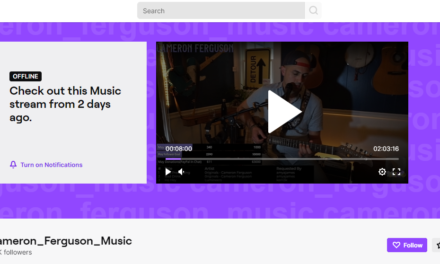No matter how talented you are, how incredible your tilt is, or how passionate you may be, you have the same 24 hours in a day as everyone else.
And, if you’re like nearly half of all content entrepreneurs, your content business is a side gig (for now). A solid chunk of your daily productive time goes to your day job so you can pay the bills – and save for that sweet, sweet upgrade to your podcast recording setup.
But – speaking as a mom and wife who works full time and still pursues my podcasting dreams of greatness – you can make time for your content business without giving up your sanity. Here are four ways I experimented with spending time on my baby content business that you might want to try, too.
You can make time for your content business without giving up your sanity, says #podcaster Ashley Stryker. #ContentEntrepreneur #CreatorEconomy Click To Tweet1. Wake up an hour earlier or stay up an hour later
After years in the corporate world, I discovered I was useless after 2 p.m. for just about everything but meetings and basic administrative work; my best creative work happens before lunchtime. (As a matter of fact, it’s before noon as I type this draft.)
I used this personal trait to my advantage when I negotiated a 7:15 a.m. start time for a job in pre-COVID times. Then, after I got laid off and started my podcast, I continued to take advantage of early mornings for my content business.
From scheduling interviews in distant time zones or working through rough audio edits over my first morning cup of tea, waking up a smidge early before my kiddo and husband are fully alert means I can get in an extra hour without sacrificing family time.
You may not be a morning person, though. In fact, one interesting study from 2011 suggests when people are tired, they solve creative problems the best. Staying up a little later when everyone’s asleep or otherwise occupied might work better for you.
As you’re getting in the recommended seven hours of sleep, experiment and see if delaying bedtime a bit or waking up early might help you find more time for your content dreams.
2. Use the Pomodoro technique for non-essential tasks
In the Pomodoro technique, you set a timer for 25 minutes and dedicate yourself to a single task. Then, when the timer goes off, you take a five-minute break before starting your next 25-minute block.
A lot of science and research supports the efficacy of this time management strategy, which boils down to the benefits of taking breaks and focusing on a single task to help your already stressed brain.
However, I have found the technique is better in reigning in time wasters rather than optimizing time for creation. I don’t necessarily want to interrupt my productive creative time with a timer, especially if I am in a “flow” state.
#Podcaster Ashley Stryker says the #Pomodoro time management technique works better for her non-creative tasks. #Productivity #ContentBusiness Click To TweetBut, I still don’t want to waste time on tasks that honestly shouldn’t take up an entire afternoon, such as:
- Social media engagement
- Email checks
- Research rabbit holes, and
- Optimization tweaks for completed content – the theory of diminishing returns applies to more than just economics, people.
So, I set a timer for doing those administrative and less-essential tasks and stop as soon as the timer buzzes. That way, I can complete those tasks and spend my time on other, more important things, such as my content business and family time.
You can modify this technique by scheduling recurring time blocks on your calendar of choice and keeping that time block sacred, no matter how tempted you are to schedule something else in that period.
I use that trick on my day job calendar where I block out 5 to 7 p.m. for family time, during which no one in my West Coast-based team can schedule meetings with me. I have a similar ongoing 30-minute appointment on my personal calendar every morning for my “targeted daily engagement” exercises to expand my podcast audience.
3. Unplug for analog first drafts
Part of finding time is finding efficiencies. Personally, I find more motivation by working on projects by hand rather than on a computer. Sure, it might take more time to transcribe a written draft over to digital format … at first.
However, starting on paper before moving to the computer has several advantages, particularly for time-crunched content creators and entrepreneurs like myself:
- It’s easier to scribble notes or ideas into a notebook during my toddler’s bath time than to risk having my Chromebook near the tub.
- Multiple studies indicate writing longhand, in particular, tends to generate more creative ideas than typing on the computer.
- Taking handwritten notes during interviews for my podcasts helps me remember it when I edit later and helps me engage in active listening with the interview subject without typing on my (noisy and distracting) mechanical keyboard.
(I also have a small fountain pen addiction that I’m desperate to feed and a small river’s worth of ink I need to use up before I can buy more, but that’s beside the point.)
So, unplugging from the omnipresent computer and internet to attempt the first draft with old-fashioned pen-and-paper can make my content easier to create overall.
Tilt tip: The analog version also helps you avoid notification distractions and resist the urge to check your email, social media channels, etc.
4. Secure a flexible schedule for your day job
This final tip may be easier said than done, but it’s worth pursuing if you’re serious about your content entrepreneur goals.
During this Great Resignation, more workers have the power to negotiate their benefits and conditions of employment, particularly if they request non-traditional benefits such as flexible work schedules that won’t cost employers any extra cash.
#TheGreatResignation means workers may have more power. For side-hustle creators, that could be asking for a flexible work schedule, says Ashley Stryker. #ContentBusiness #CreatorEconomy Click To TweetEmployment positions that are more project- and goal-based rather than schedule-based or micromanaged are better suited for flexible scheduling.
For example, the benefits of a four-day workweek are making the rounds in news and online forums again. Consider asking your manager to cut your in-office days from five to four – keeping the same goals and expectations and/or working longer hours on those four days. Then, you can spend the fifth day on your content business.
Again, this isn’t always possible, depending on your personal and professional circumstances. However, it’s a solution worth considering if you’re really eager to take your content business to the next level.
Using the clock to your advantage
These four tips revolve around being more deliberate about how you manage your time. You can’t do it all every day, but you can reexamine how well you’re maximizing the time you have for your day job, family, and your content business. Then, you can pick from the tips – or come up with new ideas – to help you manage it all, taking it day by day.
About the author
Ashley Stryker is the director of marketing at Alaniz Marketing, a remote inbound marketing agency.
Ashley is also the creator and host of the Professional Confessional podcast, where guests describe how their biggest professional mistakes changed their work, careers, and approach forever. Listen to the latest episodes at PC-Podcast.com (new episodes released at 7 a.m. US ET Tuesdays) and support the podcast at PC-Podcast.com/Support.
When unplugged from work and the podcast, Ashley can be found with her husband and toddler son-gremlin in Nottingham, Maryland. (Go Ravens!)










